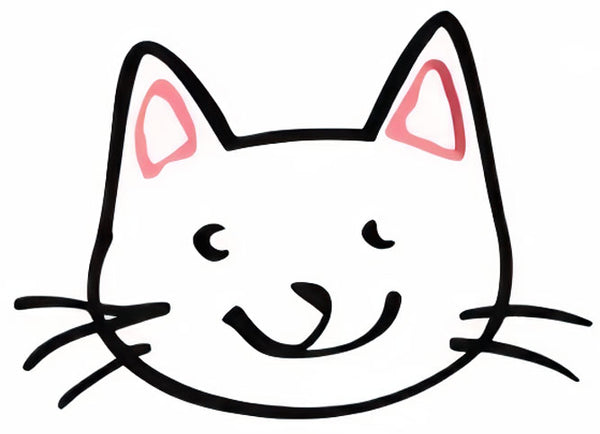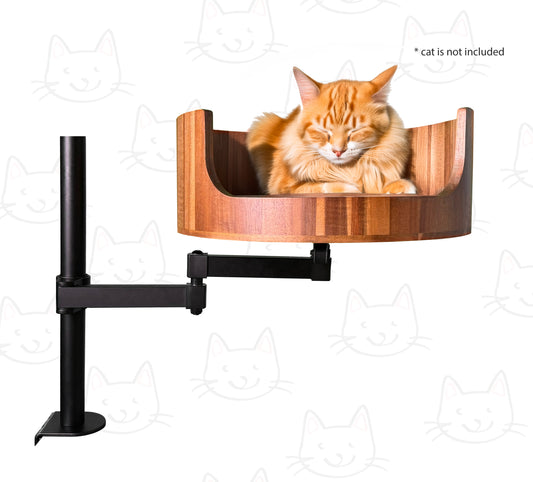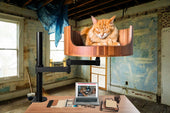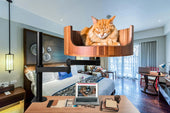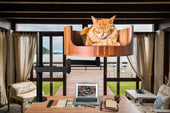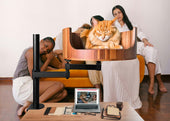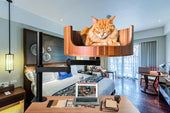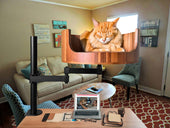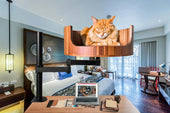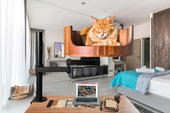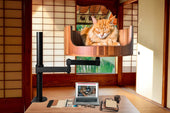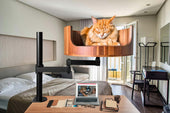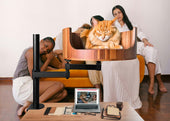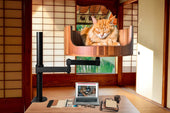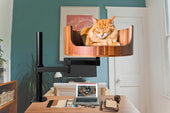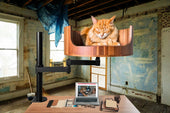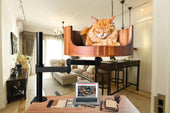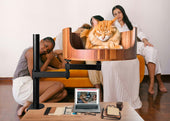
Cat Vibrating Tail: Understanding This Unique Behavior
Share
If you've ever been around a cat, you may have noticed that their tails have a tendency to vibrate or twitch in certain situations. This unique behavior can be quite perplexing for cat owners, leading them to wonder what exactly their feline friends are trying to communicate. In this article, we will delve into the fascinating world of cat behavior and explore the reasons behind why cats exhibit this vibrating tail phenomenon.
From playful interactions to feelings of fear or uncertainty, a cat's vibrating tail can convey a wide range of emotions and intentions. By understanding the context in which this behavior occurs, cat owners can gain valuable insight into their pets' state of mind and better respond to their needs. Join us as we uncover the secrets behind this intriguing behavior and learn how to decipher the subtle cues that cats use to communicate with those around them. Stay tuned to discover the hidden meanings behind your cat's vibrating tail and deepen your bond with your beloved feline companion.
1. Cat's vibrating tail is a unique behavior that can indicate a range of emotions, from excitement to aggression.
2. Understanding your cat's body language, including their tail movements, can help you better communicate with them.
3. The context of the situation, such as the cat's overall body language and surroundings, can provide clues to the meaning behind the vibrating tail.
4. It's important to observe and analyze your cat's behavior holistically to accurately interpret the message they are trying to convey.
5. Seeking guidance from a veterinarian or animal behaviorist can provide further insight into your cat's tail vibrations and overall behavior.
Causes of Cat Vibrating Tail
When a cat's tail vibrates, it can indicate a range of emotions or behaviors. One common cause is excitement or anticipation, such as when a cat is about to pounce on a toy or engage in play. Cats may also vibrate their tails when they are feeling anxious, stressed, or agitated. It can be a form of self-soothing behavior in these situations. Additionally, cats may vibrate their tails when they are feeling conflicted or unsure about a situation.
Communication Through Tail Vibrations
Tail vibrations in cats can also serve as a form of communication. Cats use their tails as a way to convey their emotions and intentions to other animals, including humans. In some cases, a vibrating tail may be a warning sign that a cat is feeling threatened or defensive. On the other hand, a cat may also use tail vibrations to show affection or excitement towards their human companions.
Observing Body Language
When trying to interpret a cat's tail vibrations, it's important to consider the cat's overall body language and context. Pay attention to other signs, such as ear position, facial expressions, and vocalizations, to get a better understanding of what your cat may be feeling. If a cat's tail vibrations are accompanied by dilated pupils, flattened ears, and a tense body posture, it may be a sign that the cat is feeling threatened or stressed.
Addressing Behavioral Issues
If your cat's tail vibrations are accompanied by other concerning behaviors, such as aggression or excessive fear, it may be a sign of an underlying behavioral issue that needs to be addressed. In these cases, it's important to consult with a veterinarian or animal behaviorist to develop a plan for addressing the root cause of the behavior and helping your cat feel more comfortable and secure. Training, environmental enrichment, and behavior modification techniques may be recommended to help your cat overcome any anxiety or stress that may be contributing to the tail vibrations.
Frequently Asked Questions
What is a Desk Cat Nest?
A Desk Cat Nest is a cozy and comfortable bed designed for cats to relax and sleep in. It provides a safe and warm space for your furry friend to rest throughout the day.
Can a Desk Cat Nest help with my cat's vibrating tail?
While a Desk Cat Nest may not specifically address the issue of a cat's vibrating tail, providing your cat with a comfortable and stress-free environment could potentially help reduce any anxiety or tension that may be causing the tail to vibrate.
How should I introduce my cat to a Desk Cat Nest?
It's best to place the Desk Cat Nest in a quiet and calm area of your home where your cat likes to relax. You can also entice your cat with treats or toys to explore the bed and make it more appealing to them.
Is a Desk Cat Nest easy to clean?
Yes, Desk Cat Nests are usually designed with removable and washable covers for easy cleaning. Simply follow the manufacturer's instructions on how to properly wash and maintain the bed.
Will a Desk Cat Nest fit my cat's size?
Desk Cat Nests come in various sizes to accommodate cats of different shapes and sizes. Be sure to check the dimensions of the bed before purchasing to ensure it is suitable for your cat.
In conclusion, the Desk Cat Bed is a valuable choice for addressing cat vibrating tail. The comfortable and secure design of the bed provides a calming environment for your feline friend, helping to reduce stress and anxiety that may be causing the tail to vibrate. Additionally, the elevated height of the bed allows for better observation of their surroundings, further promoting a sense of security and comfort. With the Desk Cat Bed, you can provide your cat with a cozy and soothing retreat that contributes to their overall well-being and happiness.
